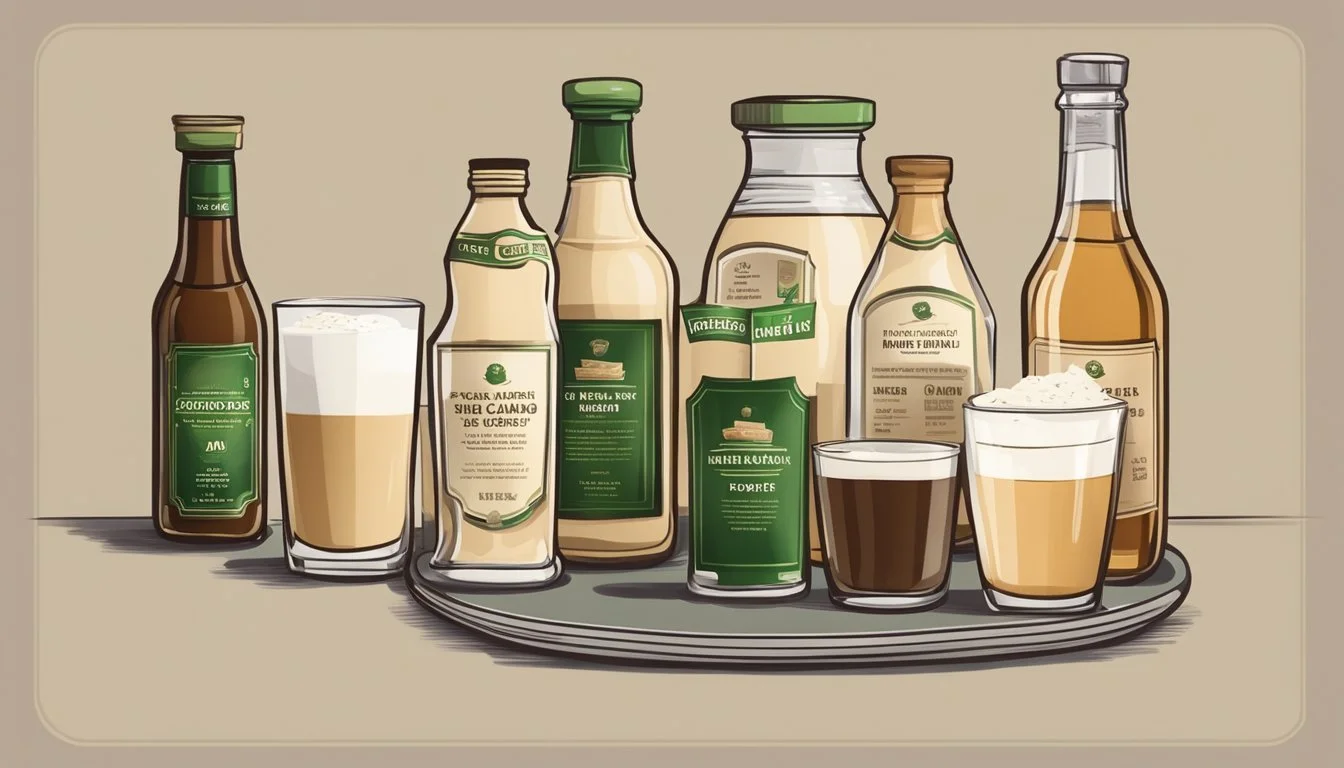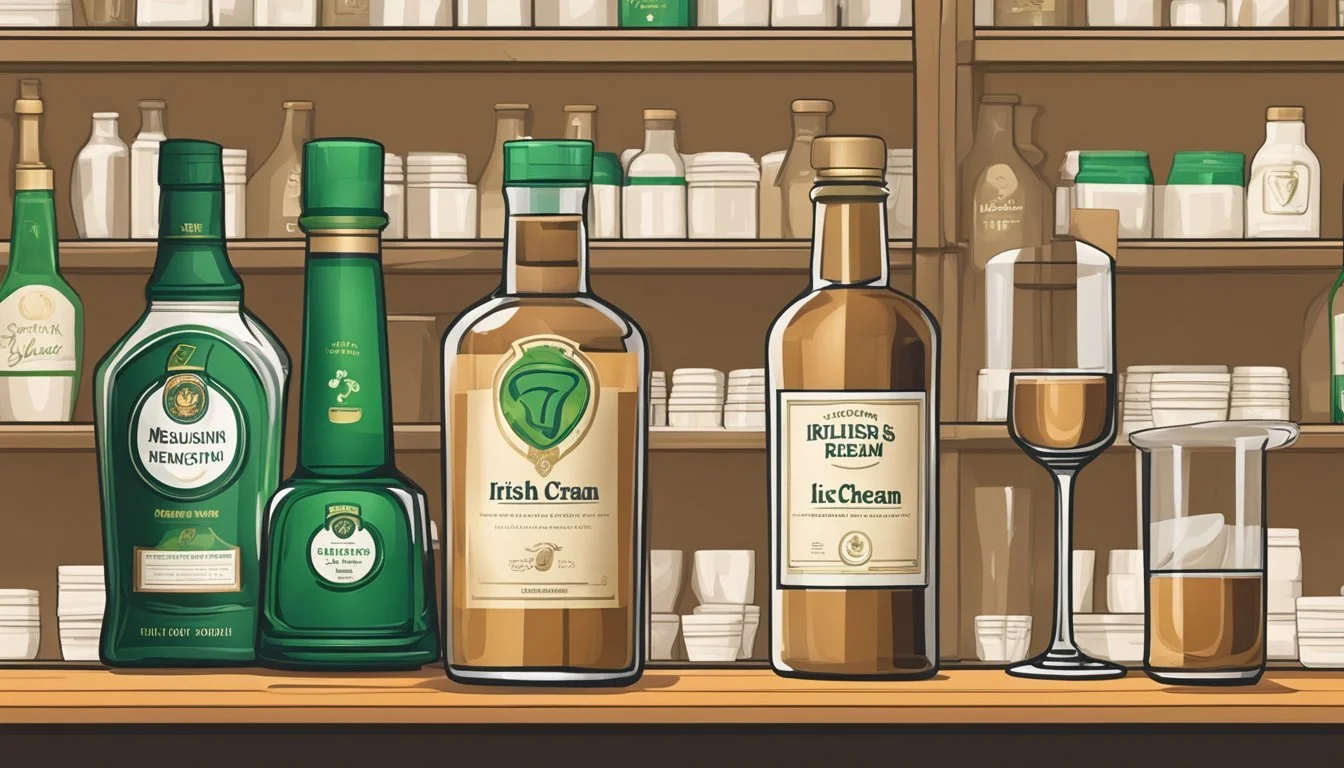How Many Servings of Irish Cream Is Too Much
A Health Guide
When indulging in a delightful glass of Irish Cream, it's crucial to know how much is too much. Consuming more than one serving of Irish Cream, which is typically 1.5 ounces, can quickly add up in calories and sugar. With each serving containing around 327 calories and 20 grams of sugar, it's easy to see how moderation becomes essential.
Not only are the caloric and sugar contents significant, but Irish Cream also contains 13 grams of fat, with 8 grams of that being saturated fat. For those mindful of their daily nutritional intake, it’s clear that enjoying this rich, creamy liqueur should be an occasional treat rather than a daily habit.
While the creamy, sweet taste of Irish Cream can be tempting, consuming it in large amounts can impact your overall health. Understanding these nutritional facts can help in making informed choices and enjoying Irish Cream responsibly.
Understanding Irish Cream
Irish Cream is a popular liqueur known for its rich and creamy flavor, often enjoyed on its own or as an addition to coffee or desserts. This section explores the history and composition of Irish Cream, along with its common ingredients.
History and Composition of Irish Cream
Irish Cream originated in Ireland in the 1970s. The blend of fresh cream and Irish whiskey formed the basis of this luxurious liqueur. It was developed as a way to create a product that combined the richness of cream with the distinct flavor of whiskey.
The composition of Irish Cream generally includes a mix of cream, whiskey, chocolate, and sweetened condensed milk. Different brands may offer unique twists, sometimes adding flavorings like coffee or vanilla extract. The mix of ingredients melds to create a smooth and sweet liquor that has gained widespread popularity.
Common Ingredients in Irish Cream
The primary components of Irish Cream are cream and whiskey. Fresh cream provides the liqueur its rich texture, while Irish whiskey gives it a distinctive alcoholic bite. The inclusion of chocolate imparts a subtle cocoa flavor.
Sugar or sweetened condensed milk adds sweetness, making Irish Cream a dessert-like beverage. Some versions include coffee flavor, which enhances the depth of taste, and vanilla extract for a hint of added aroma.
A typical serving size offers approximately 327 calories, which emphasizes its richness. The fat and sugar contents are significant, contributing to its high caloric value.
Nutritional Profile of Irish Cream
Irish Cream, while a popular and flavorful addition to beverages and desserts, contains specific nutritional elements that are important to consider. This section breaks down the caloric content, macronutrients, and the presence of various minerals and vitamins found in Irish Cream.
Caloric Content and Macronutrients
Irish Cream is rich in calories, primarily due to its alcohol, cream, and sugar content. A serving size of approximately 100 milliliters (about 3.38 US fluid ounces) contains around 327 calories.
Macronutrients per 100 ml:
Total Fat: 13 grams
Saturated Fat: 8 grams
Carbohydrates: 25 grams
Sugars: 20 grams (approximate)
Protein: 3 grams
The high fat and sugar content contributes significantly to its calorie count. The presence of saturated fat is notable, comprising nearly two-thirds of the total fat. Such content should be consumed in moderation, particularly for individuals managing their calorie or sugar intake.
Presence of Minerals and Vitamins
Irish Cream contains small amounts of some essential minerals and vitamins.
Key Minerals and Vitamins per 100 ml:
Vitamin A: 7% of the Daily Value (DV)
Vitamin D: 1% of the DV
Calcium: 1% of the DV
Iron: 0% of the DV
Potassium: 14 milligrams (minimal contribution to DV)
Cholesterol: 40 milligrams
While Irish Cream does offer some Vitamin A, its contributions of other vitamins and minerals are relatively modest. It is particularly low in iron and potassium. The cholesterol content is substantial and should be noted by those tracking their dietary intake.
In essence, while Irish Cream can offer a delightful addition to festive beverages, its nutritional profile indicates that it should be consumed with awareness of its significant calorie, fat, and sugar content, as well as its minimal mineral and vitamin contributions.
Health Considerations
When consuming Irish Cream, it is important to monitor both the alcohol content and the dietary impacts, including sugars and fats. Also, understanding the long-term implications can help maintain a balanced diet and good health.
Alcohol Content and Safe Consumption
Irish Cream contains a significant amount of alcohol. The average serving has about 13.5 grams of alcohol. For men, the Dietary Guidelines for Americans recommend no more than two drinks per day. For women, the recommendation is one drink per day.
Exceeding safe consumption levels can lead to liver damage, addiction, and impaired judgement. This is particularly concerning for children and adolescents, who should not consume any alcohol. Also, consider the impact on weight management and overall heart health, as excessive alcohol intake is a known risk factor for heart disease.
Dietary Impact of Sugars and Fats
A typical serving of Irish Cream includes 25 grams of carbohydrates, primarily from 20 grams of sucrose. This high sugar content can spike blood sugar levels and increase the glycemic index, posing risks for individuals with diabetes or those watching their glycemic index intake.
Baileys Irish Cream also contains healthy fats derived from cream. While these fats can support digestive health by promoting beneficial gut bacteria, the sugar content may negate these benefits. Additionally, regular consumption can contribute to weight gain due to the high-calorie content of approximately 327 calories per 100 ml.
Long-Term Health Implications
Long-term consumption of Irish Cream can have several implications. First, there is an increased risk of weight gain due to its calorie density. Sustained high blood sugar levels can lead to diabetes and metabolic syndrome. Also, excessive sugar intake is linked to dental issues and poor cardiovascular health.
Moderation is key to avoiding negative health outcomes. Balancing occasional consumption with a diet rich in nutrients and low in empty calories can help mitigate some risks. For those managing heart health, reducing sugar and alcohol consumption is essential. Adhering to the Dietary Guidelines for Americans can help maintain a balanced and healthy lifestyle.
Guidelines for Consumption
Irish Cream, such as Baileys, is rich in calories and alcohol content. Awareness of standard serving sizes and personal tolerance levels can help in consuming it responsibly.
Standard Serving Sizes
Understanding what constitutes a standard serving of Irish Cream is crucial to avoid overindulgence. A standard serving size of Baileys Irish Cream is typically 1.5 ounces or about 44 milliliters.
This serving contains approximately 147 calories. It also includes about 5 grams of fat and 11 grams of sugar. Moreover, the alcohol content stands at 17%.
For comparison, consuming more than one serving size increases calorie intake significantly. This adds up quickly, making it important to stick to recommended portions.
Determining Personal Tolerance
Each individual’s tolerance to alcohol can vary. Factors such as body weight, age, and metabolism all play a role.
Knowing one’s limits can help in consuming Irish Cream responsibly. Generally, moderate alcohol consumption is defined as up to one drink per day for women and up to two drinks per day for men.
Regularly exceeding these limits could lead to health issues. Additionally, it might be wise to consult a healthcare professional for personalized advice on alcohol consumption.
By considering these factors, individuals can enjoy Irish Cream in moderation while minimizing potential health risks.
Incorporating Irish Cream in Recipes
Irish Cream adds a rich, creamy flavor to a variety of dishes and beverages whether it's homemade or store-bought. Its versatility allows it to be used in desserts, drinks, and even as a substitute for other ingredients.
Desserts and Beverages
Irish Cream is excellent in desserts such as cakes, cheesecakes, and brownies. It can be used to enhance the flavor of frostings or to create a decadent filling for pastries.
For drinks, it’s commonly added to Irish Coffee, hot chocolate, or even a Chocolate Martini. Simply adding a splash of Irish Cream can transform a simple cup of coffee into a luxurious treat.
To make your own, blend Irish Cream with dairy alternatives like heavy cream, sweeteners like honey, or flavors such as vanilla and pumpkin spice.
Creating Your Own Irish Cream
Making homemade Irish Cream is simple and can be done with a few key ingredients. The base often includes Irish whiskey, heavy cream, sweetened condensed milk, and flavorings like vanilla and instant espresso.
Mixing these with a good quality blender ensures an even consistency. Adding cocoa powder can give it a chocolatey twist.
For those who prefer it less sweet, adjusting the amount of condensed milk or using a simple syrup can help.
Suitable Pairings and Substitutes
Pairing Irish Cream with chocolate, coffee flavors, or pumpkin spice makes for unique and enjoyable taste experiences. It complements the creamy and rich textures found in dairy-heavy desserts.
When used as a substitute, Irish Cream can replace cream in recipes, contributing a hint of Irish whiskey and sweetness.
For a non-alcoholic version, using flavored creamers with similar notes or a mixture of eggs, non-alcoholic liqueur, and sweetener could achieve a similar result.
Practical Tips for Storage and Use
Proper storage of Irish Cream ensures that it remains fresh, flavorful, and safe to consume. Serving it in creative and appealing ways can enhance the enjoyment for you and your guests.
Best Practices for Refrigerated Storage
Store Irish Cream in a refrigerator to maintain its optimal quality. Aim for a temperature range of 32°F (0°C) to 50°F (10°C). Keeping the bottle at a consistent, cool temperature helps preserve its flavors and prevents spoilage.
Avoid placing the bottle near a stove or dishwasher, as these areas can lead to increased humidity and temperature fluctuations. Use the original glass bottle or a tightly sealed glass container for storage.
While storing in the fridge, position the bottle away from the door where temperature changes frequently occur. If transferring to a jar or another container, ensure it's clean and airtight to avoid loss of flavor.
Presentation and Serving Recommendations
Serve Irish Cream well-chilled, either neat, over ice, or blended into cocktails. For a creative touch, use it in desserts or as an accompaniment to coffee. Glass bottles and elegant jars can make serving more visually appealing.
When gifting, choose a decorative bottle or jar, possibly accompanied by a set of glasses or a blender for making cocktails. Be mindful of appropriate portion sizes; a standard serving is about 1.5 ounces (44ml). Avoid serving too much, as Irish Cream can be quite rich and sweet.
Elevate the presentation by garnishing with chocolate shavings, whipped cream, or a sprinkle of cinnamon. This adds flair and enhances the overall experience.








